Please take a look at past blog posts, as the information in the past reports is still relevant and will help with species identification. And be sure to visit and contribute to our iNaturalist Wildflower Watch Project.

Many of the mountain slopes, including those in the Hexie Mountains, are painted yellow with the flowers of Encelia. Photo: NPS / Neil Frakes
Wilson Canyon and Pinto Basin
The massive valley in the center of the park, known as Pinto Basin, is still a good place to view wildflowers. Keep your eyes peeled for desert lilies (Hesperocallis undulata), especially around Turkey Flats. Desert gold (Geraea canescens) is common but nearing the end of its bloom. Creosote bushes (Larrea tridentata) are covered in yellow flowers. Desert five spots (Eremalche rotundifolia) have about a week left for their bloom. The sprawling multi-flowered sand verbena (Abronia villosa) is also common.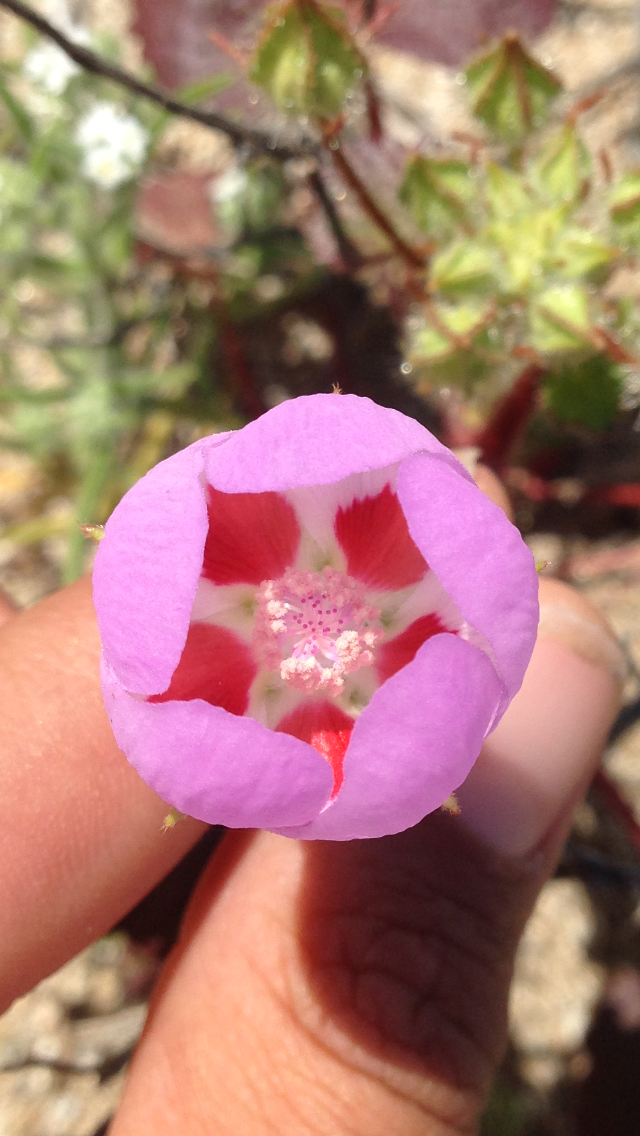
Desert five-spot. Photo: Sam King
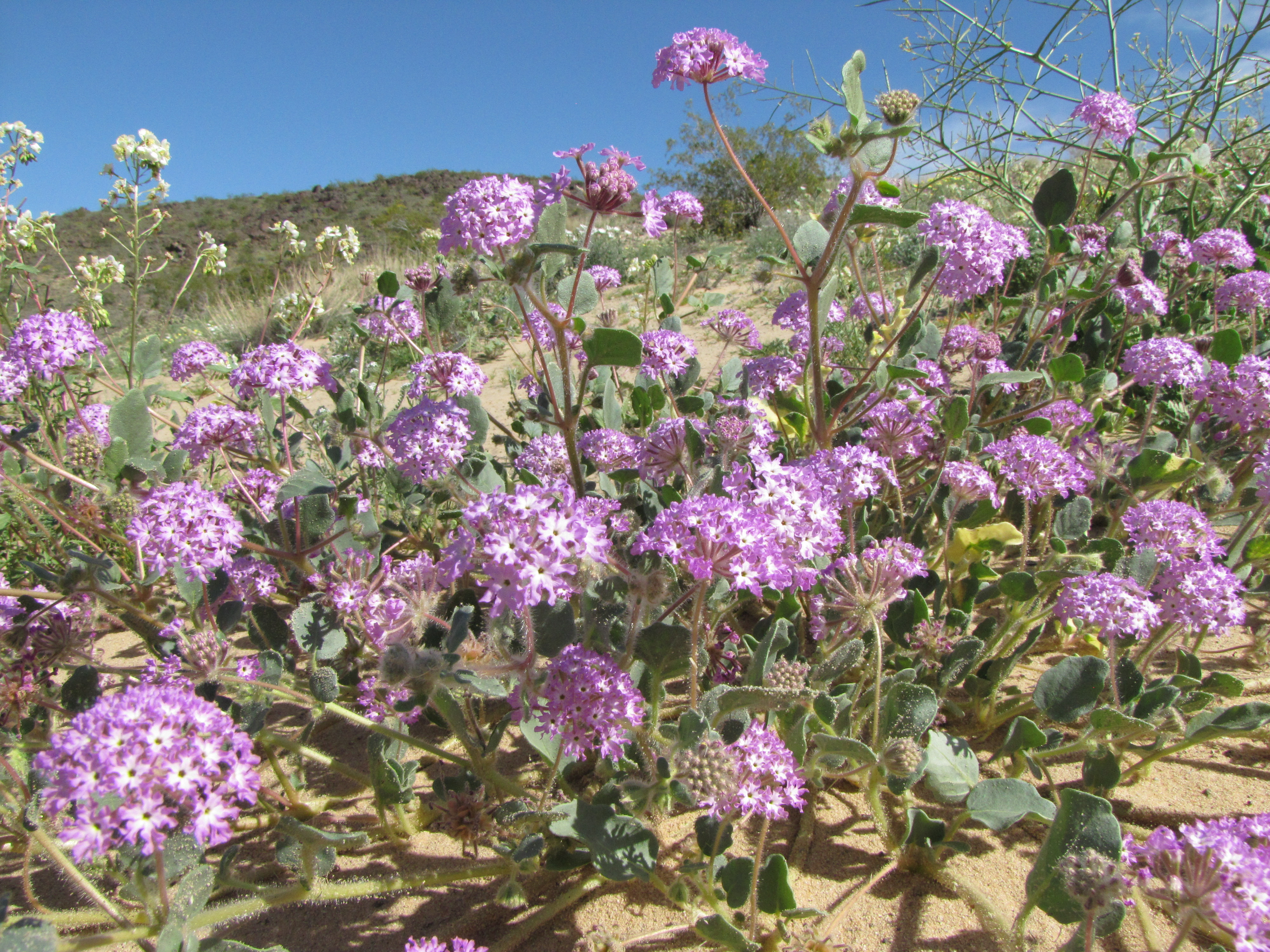
Sand verbena. Photo: NPS / Neil Frakes
Cottonwood Springs and Cottonwood Canyon, and the South Boundary Bajada
The lowest elevations of the park are found within the Colorado Desert. The southern entrance to the park, just north of I-10, is still a good spot for viewing wildflowers. The red flowers on the tips of the branches of Ocotillo (Fouqueria splendens) make them appear as if they were dipped in paint. Other common species blooming include desert dandelion (Malacothrix glabrata), chia (Salvia columbariae), and poppies (Eschscholzia spp.). The bloom at the south boundary should be good for the next couple of weeks.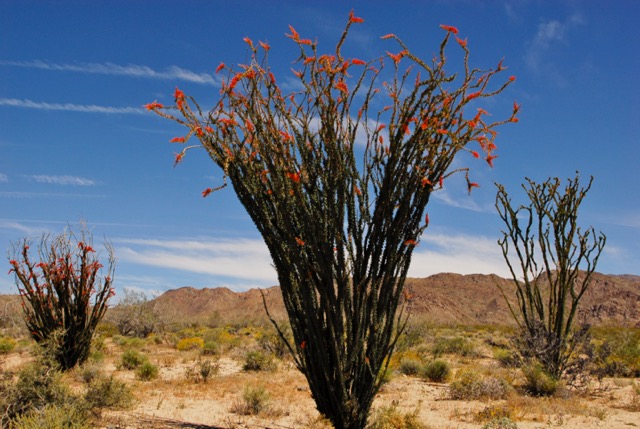
Flowering Ocotillos. Photo: Horace Birgh
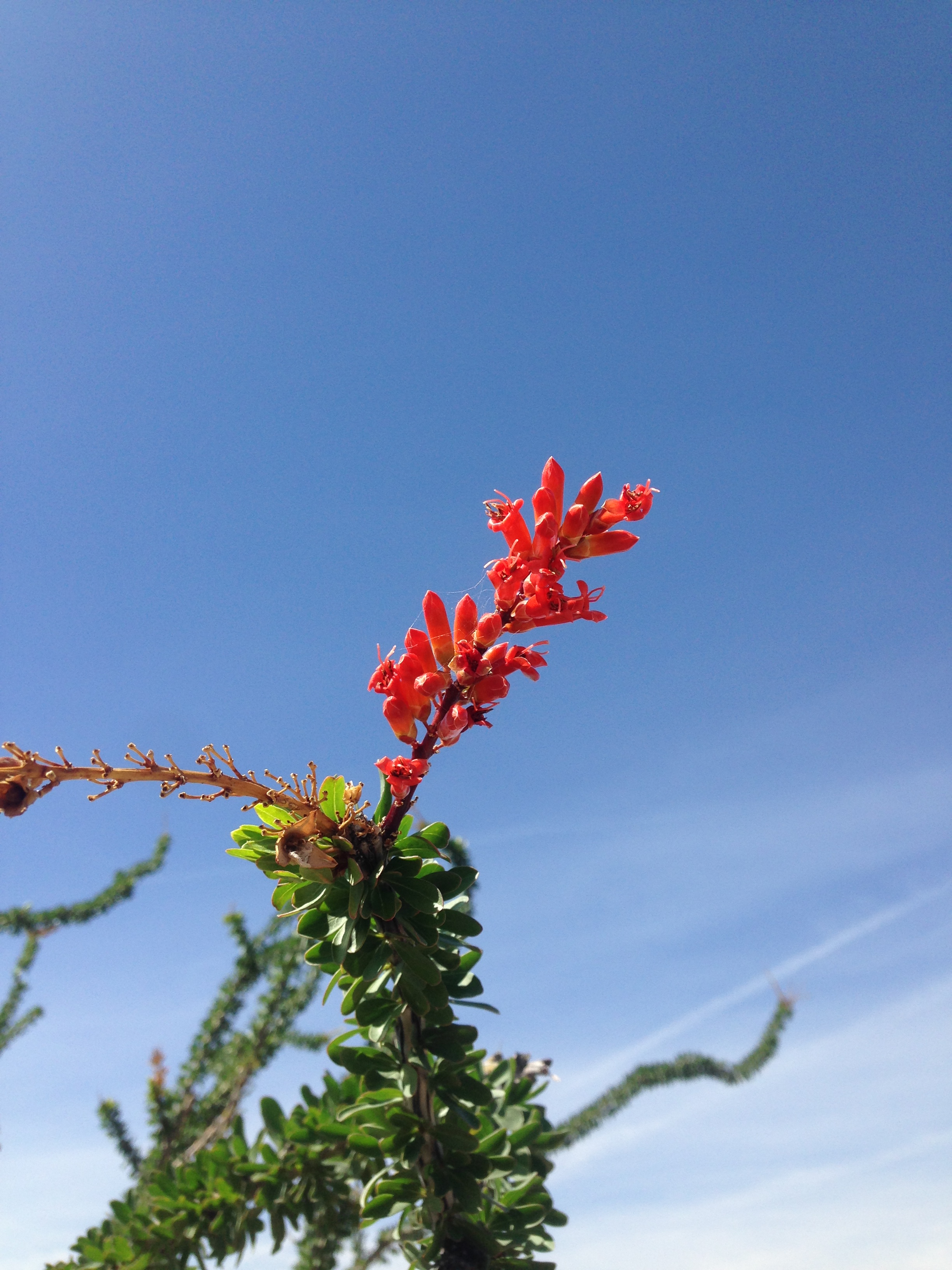
Close up of an Ocotillo flower. Photo: Sam King
Heading to the north of the South Bajada, you will enter Cottonwood Canyon. Here, the rocky hillslopes are quite stunning; dotted with densely covered yellow flowered brittlebush (Encelia farinosa). The bright red bursts of chuparosa (Justicia californica) stand out as you drive by. As you exit the canyon and approach the Cottonwood Visitor Center, be on the look out for the yellow flowered prince’s plume (Stanleya pinnata).
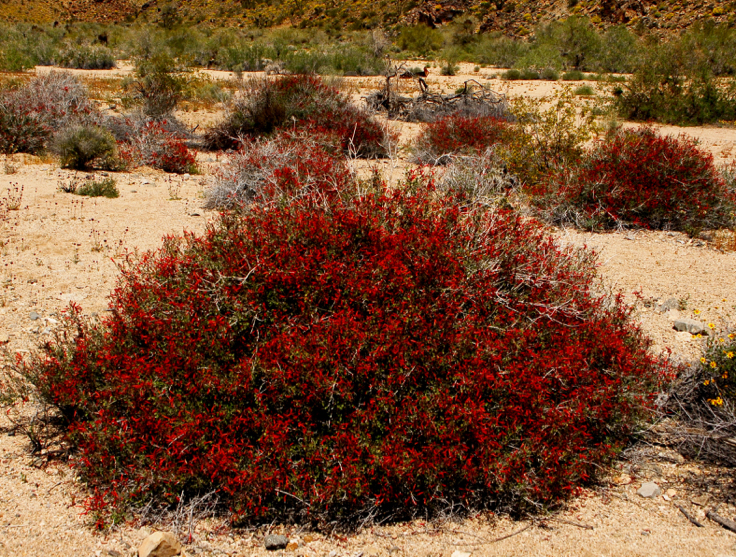
Bright red flowers of chuparosa in Cottonwood Canyon. Photo: Horace Birgh
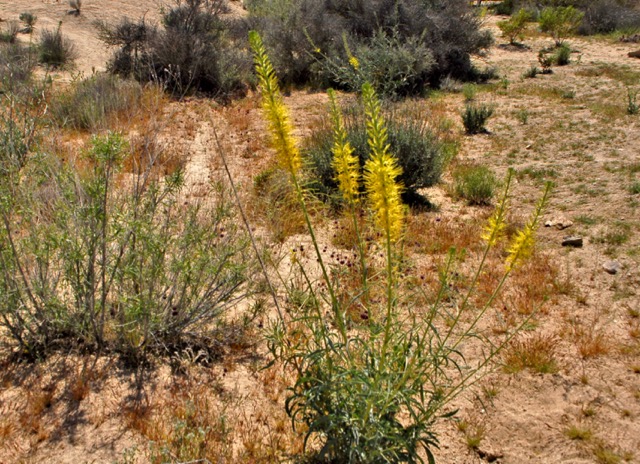
Yellow flowers of the elegant prince's plume. Photo: Horace Birgh
North/Twentynine Palms Entrance
The area just inside the park from the entrance gate outside of Twentynine Palms is becoming a great spot to view wildflowers. The mountain slopes are covered in yellow flowers. The is a good bloom of desert dandelion (Malocothrix glabrata) along the roadside. The creosote bushes are covered in yellow flowers, as are the spiny senna (Senna armata). Mojave yuccas are abundantly flowering in the area. There is a good diversity in the bloom here, and you will see a lot of color, mostly yellow but also magenta, white, and purple.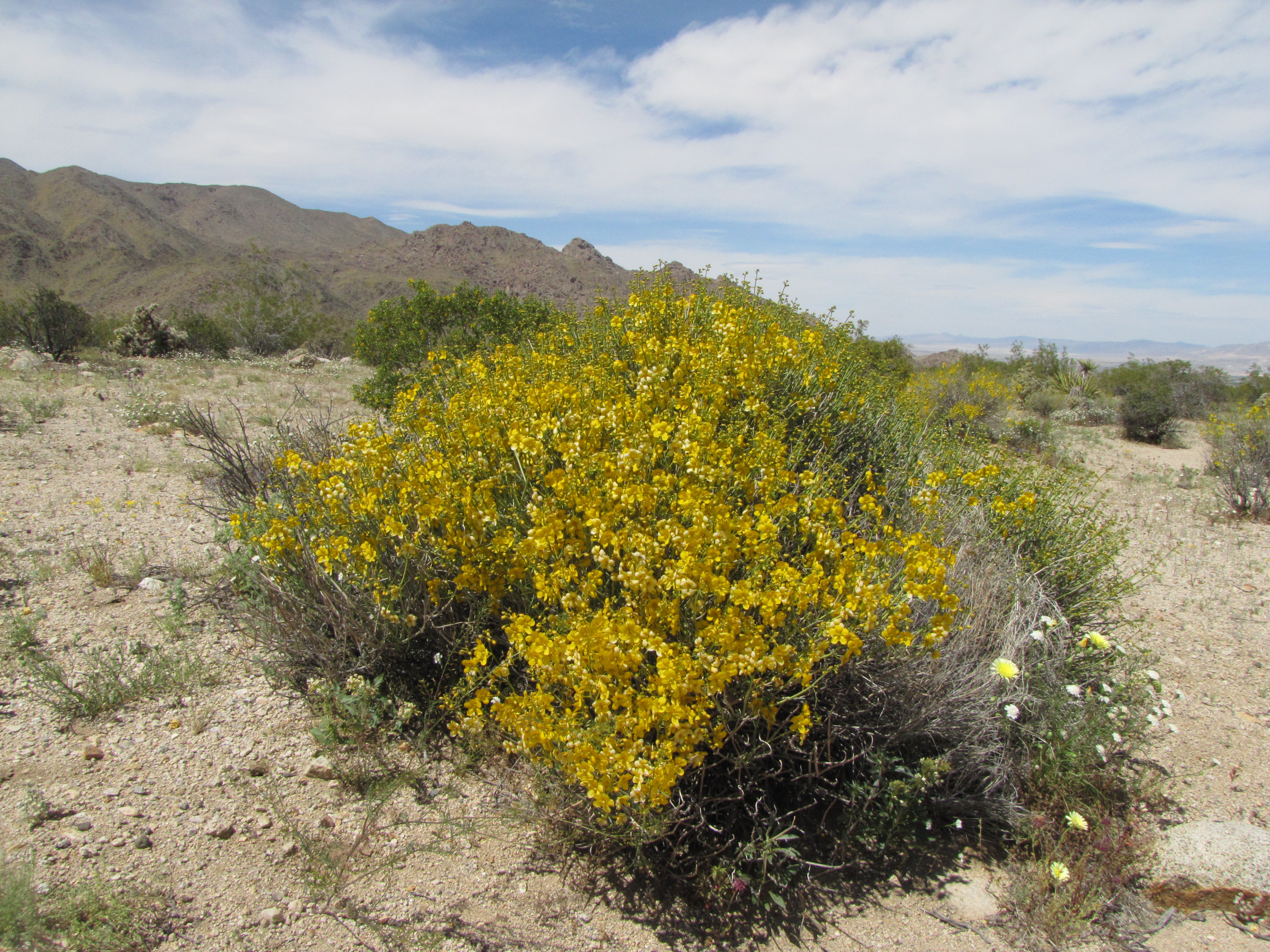
Yellow flowers of spiny senna (Senna armata), a member of the legume family. Photo: NPS / Neil Frakes.
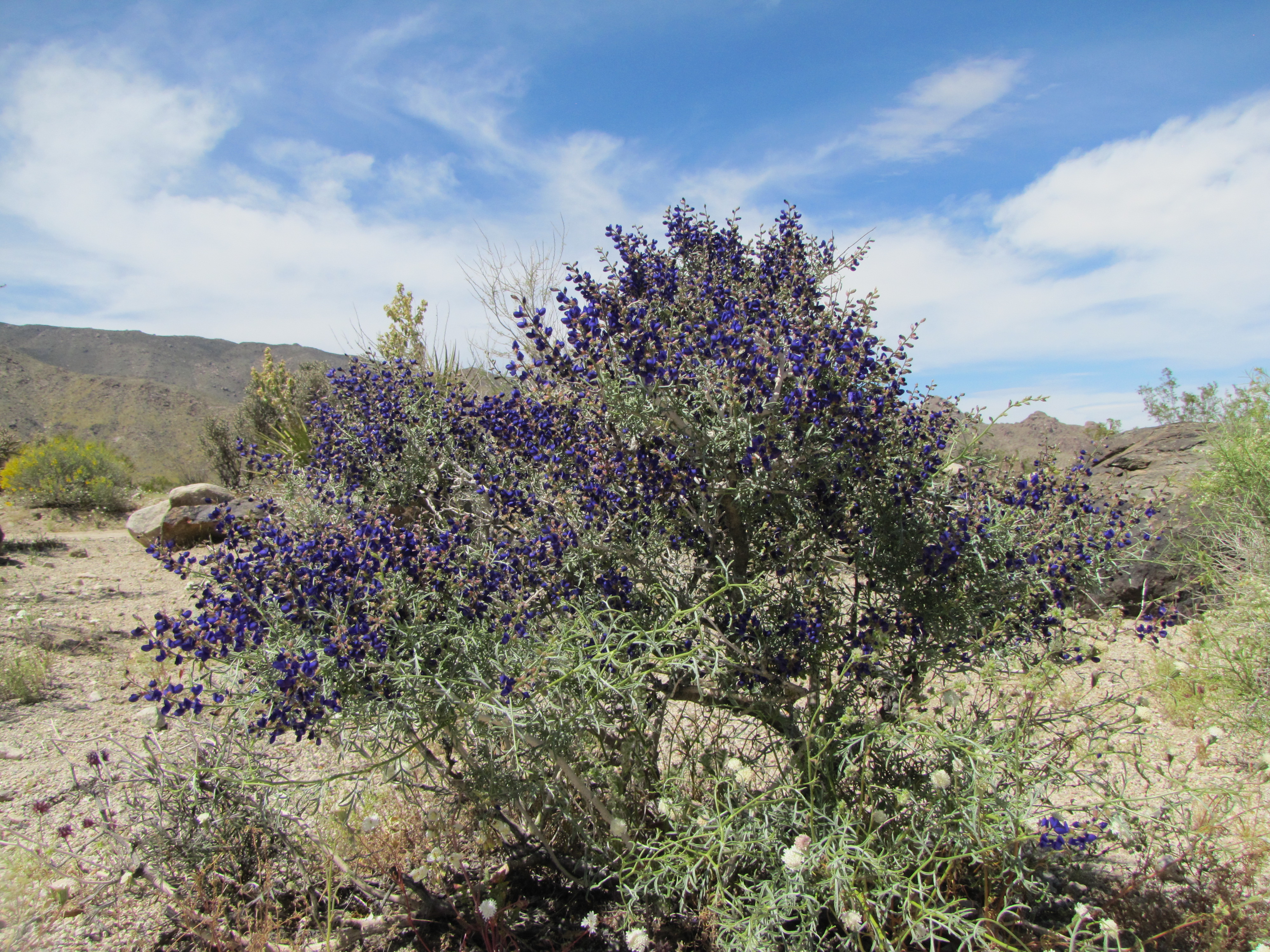
Indigobush adds some variety to the bloom near the North Entrance. Photo: NPS / Neil Frakes
Wonderland of Rocks
Along Park Boulevard, through the higher elevations of the park where Joshua trees grow, we are not seeing an abundance of wildflowers yet. However, for those that are willing to get out of the car and look, you are likely to find some gems. Keep your eyes peeled for our only red flowering cactus, the Mojave mound cactus (Echinocereus mojavensis). Try to spot the 8 to 10 foot tall flowering stalk of Parry’s Nolina (Nolina parryi).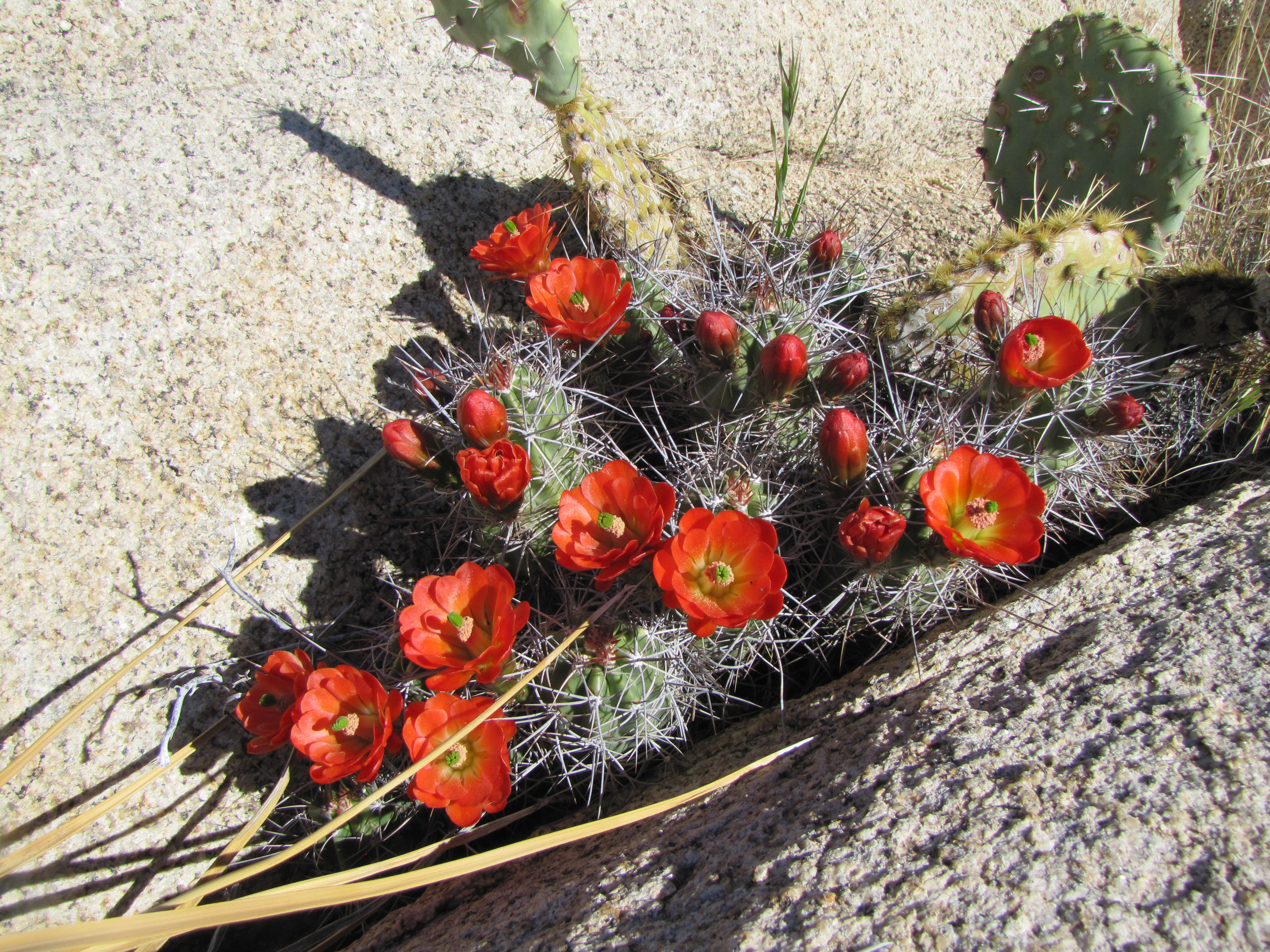
Mojave mound cactus is the only cactus with red flowers in Joshua Tree. Photo: NPS / Neil Frakes
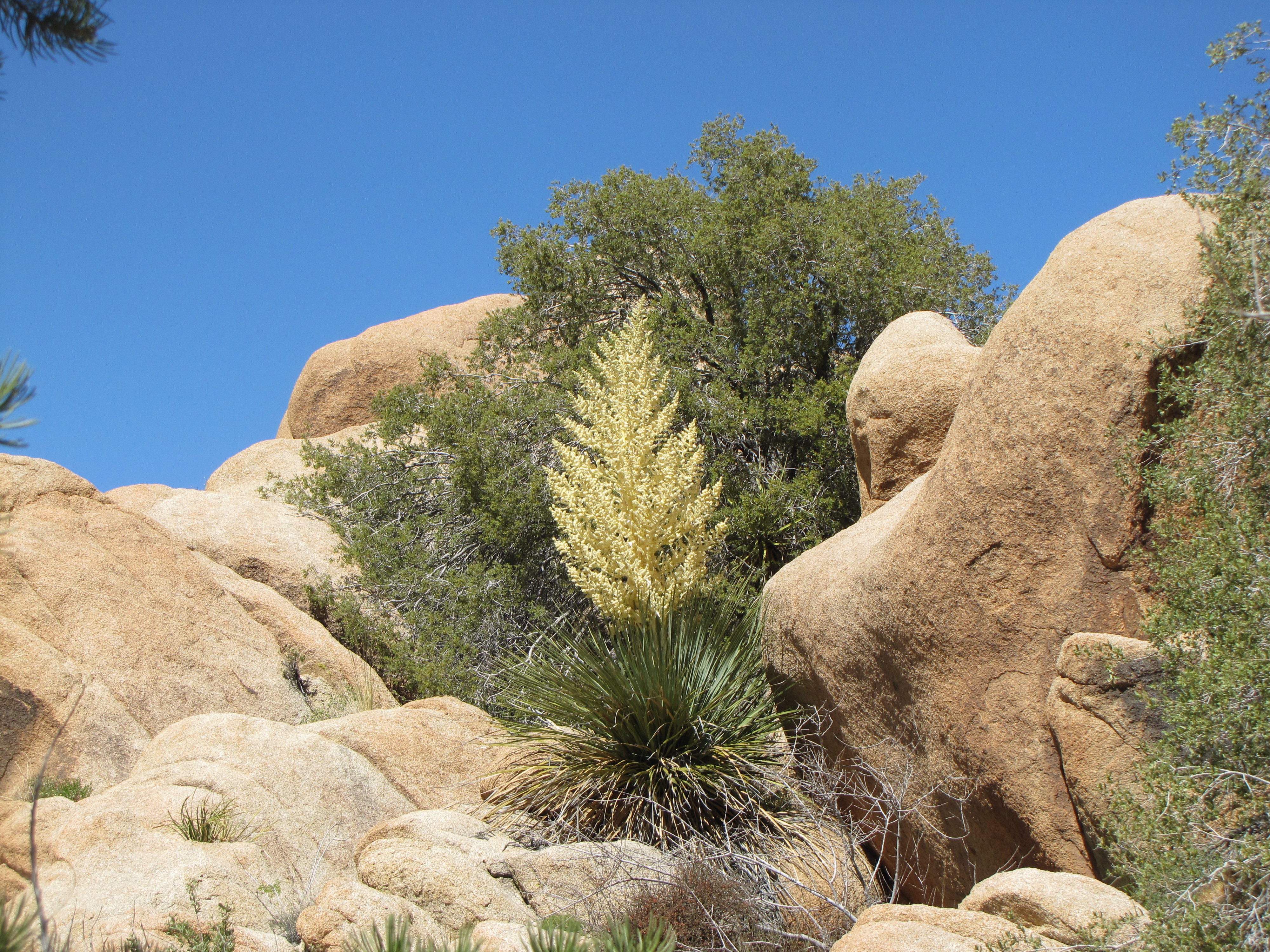
Parry's Nolina is starting to flower among the boulders in the Wonderland of Rocks. Photo: NPS / Neil Frakes
You may find the beautiful violet colored flowers of Canterbury bells (Phacelia campanularia). These grow on the slopes of washes and in rocky areas. If you are willing to get down close to the ground, you may get a good view of a variety of “belly flowers” such as Bigelow’s monkey flower (Mimulus bigelovii).
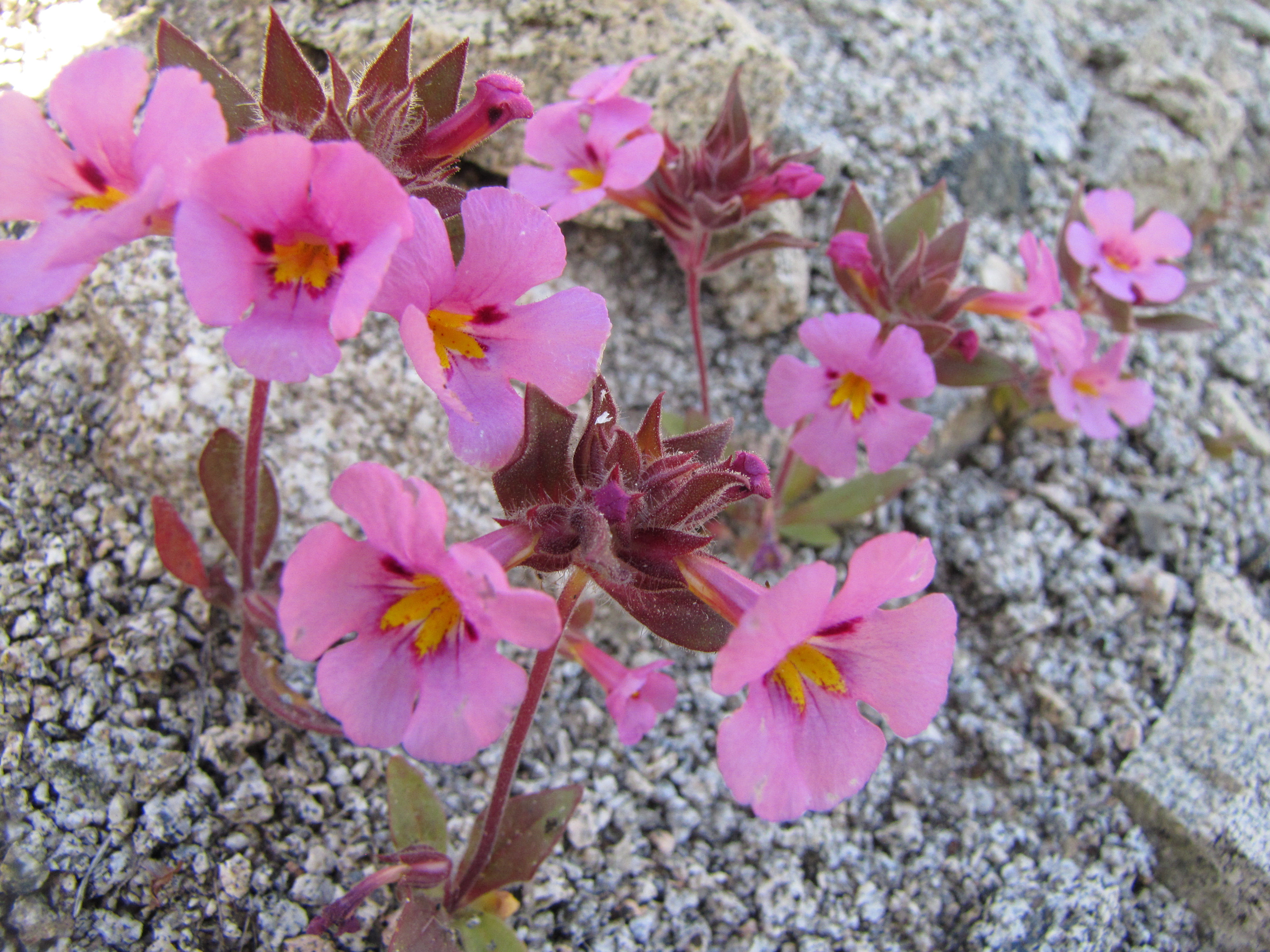
Bigelow's monkeyflower is generally less than 6 inches tall. Photo: NPS / Neil Frakes
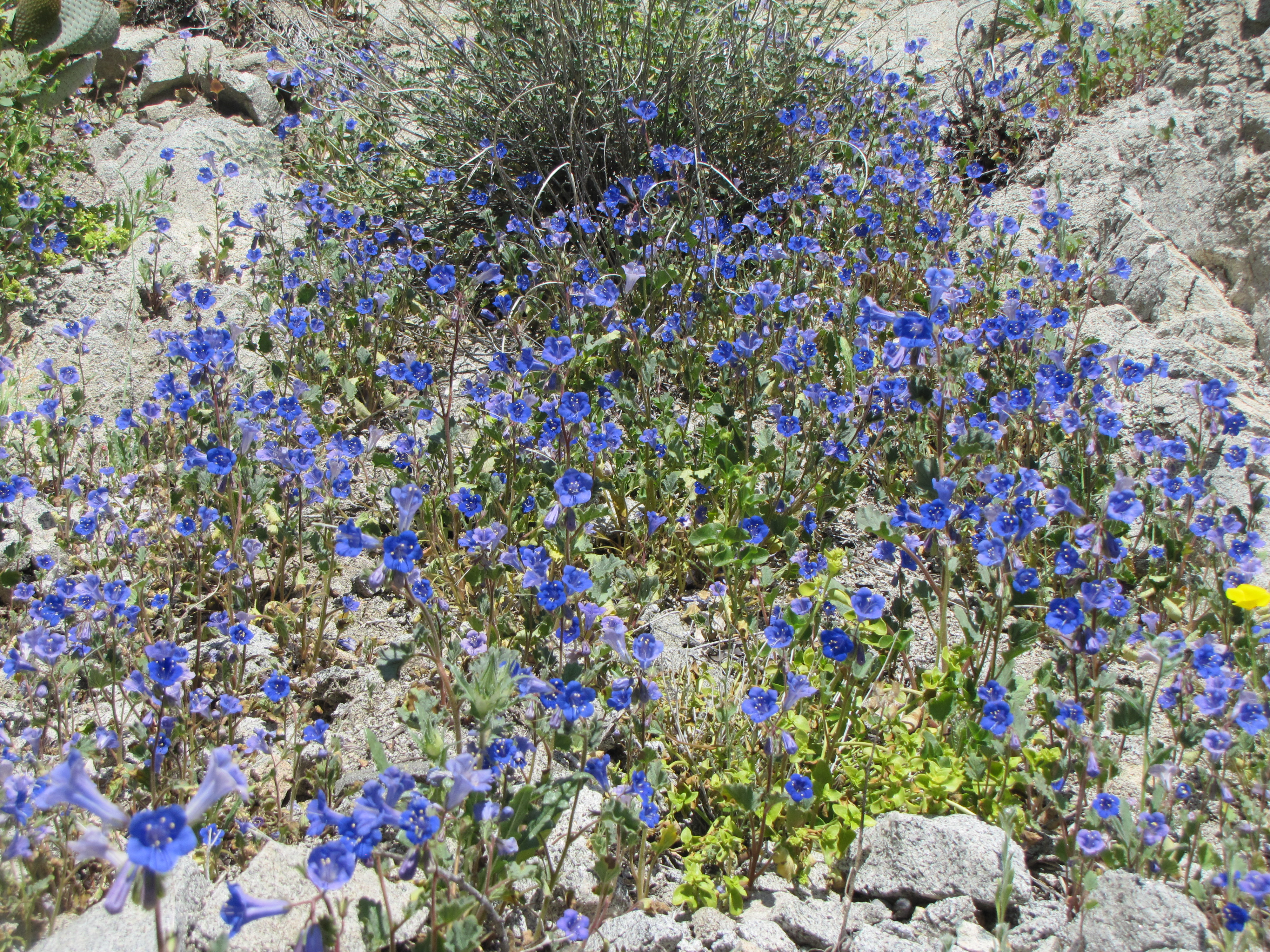
Canterbury bells can form dense patches of violet-blue flowers. Photo: NPS/ Neil Frakes
Non-native Invasive Plants
Invasive plants are those that are not native to our region and tend to grow quickly and aggressively, out-competing other plants. They are generally brought here by humans, either accidentally or intentionally. Invasive plants are a major challenge for resource managers at Joshua Tree National Park. We have several species of invasive grasses and mustards that are likely outcompeting our native wildflower species and may be preventing nice wildflower displays in some areas.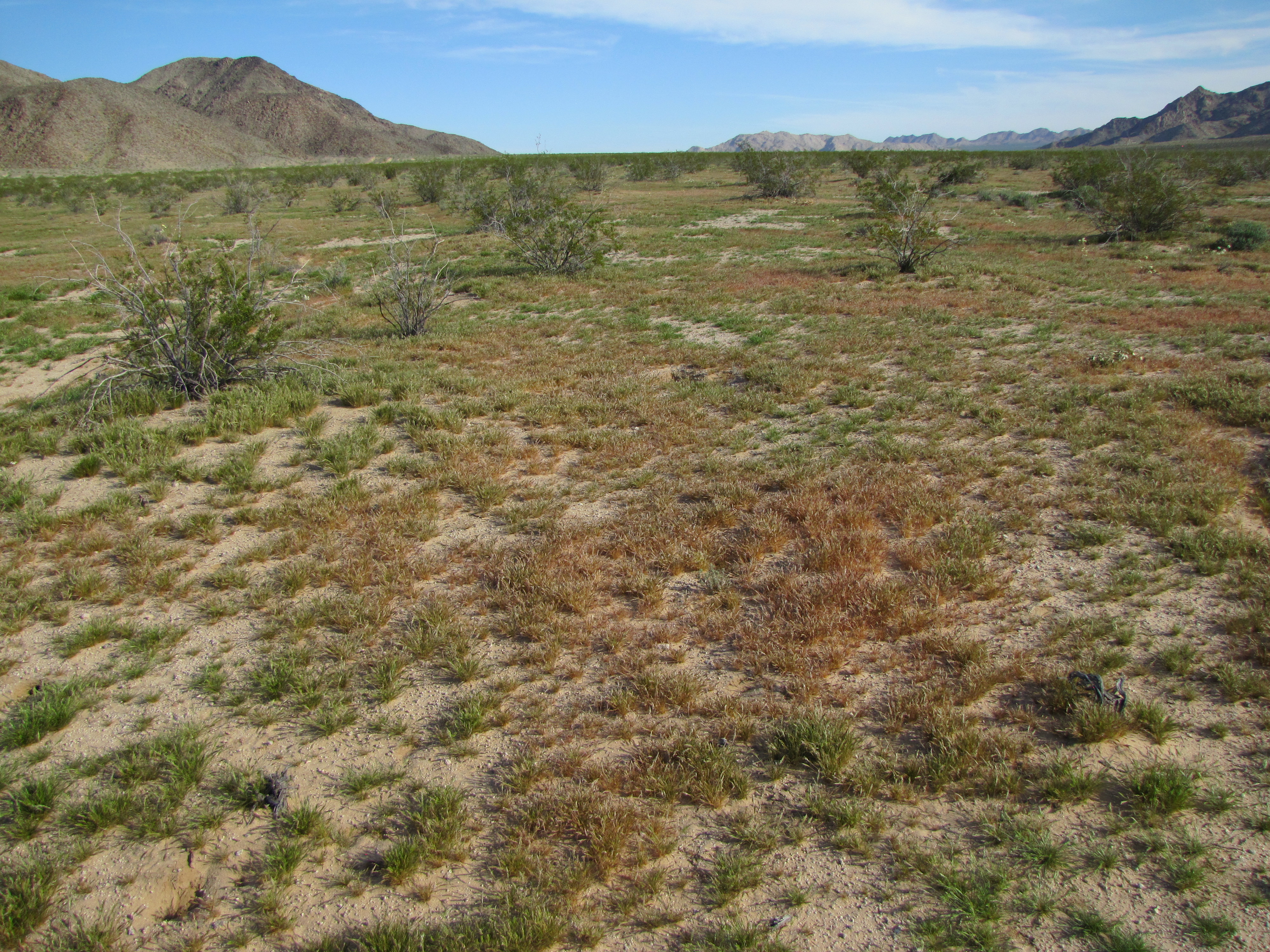
Dense cover of Mediterranean split grass (Schismus spp.) near Clark's Pass. Invasive grasses such as this one may prevent native annual wildflowers from growing. Photo: NPS / Neil Frakes
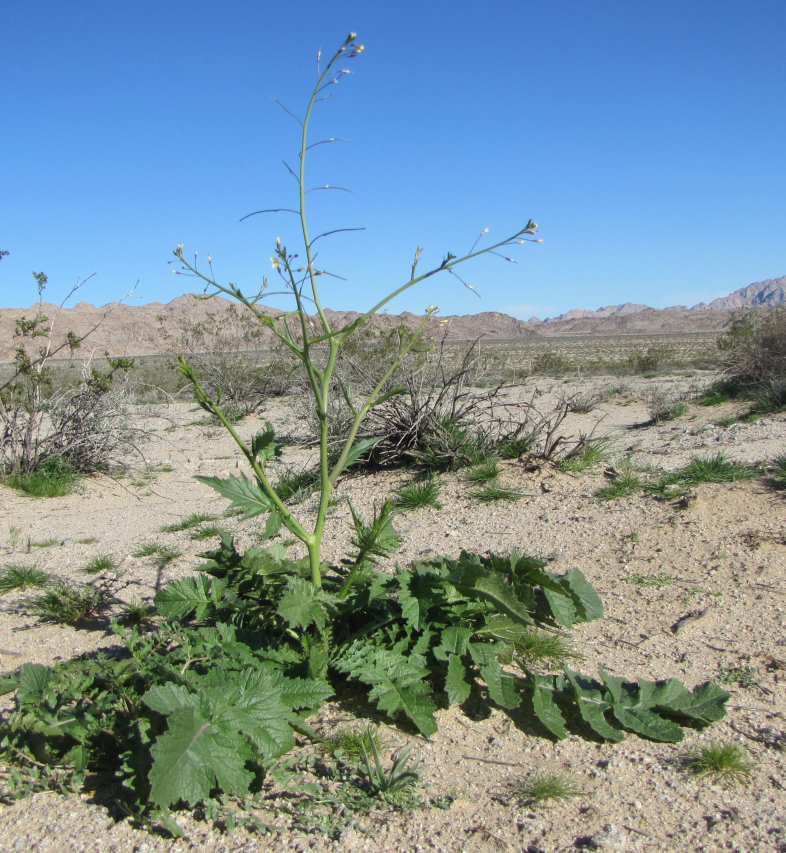
Saharan mustard (Brassica tournefortii) is a fast growing aggressive invader that can choke out native plants, including some rare species of plants only found growing on sand dunes. Photo: NPS / Neil Frakes
What can you do?
To prevent the spread of invasive plants, please consider taking the following actions before coming to Joshua Tree:- Wash your car so that it is free of mud and other debris. Invasive plant seeds can travel long distances on vehicles.
- Make sure your gear and clothing is clean. Similar to your vehicle, you may transport invasive plant seeds on your clothing or on your camping gear. Shake out your tent BEFORE you leave on your trip.
- Clean out the seeds and debris that get stuck in your shoelaces. Invasive grass seeds often get stuck underneath your shoelaces when you walk through a patch of them. Clean out this part of your shoe in a safe place and put the seeds in your garbage rather than dumping them out on the ground!
- Spread the word! Tell other people to take these actions as well.
